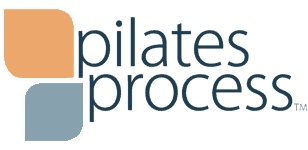Working with clients in various levels of pain over the past 15 years, I’ve developed an understanding, a respect, of the specific challenge that is coping with chronic pain.
Fluctuating in intensity but always present, the pain is frequently without obvious cause. Something definitive may have triggered the acute onset initially but that doesn’t explain the ongoing, chronic pain years later.
Comprehension of this is challenging on a lot of levels and there are two common frustrations that constantly arise.
1. Hearing the phrase “but you look fine.”
Having real, intense pain that is not categorized by a disease or something that we can easily grasp can result in a lack of empathy and social support.
2. Fatigue
It’s exhausting to modulate activities, check in with pain levels and adapt constantly. Many sufferers are more annoyed with the fatigue than with the pain itself.
Why? Why? Why?
Chronic pain research has zeroed in on the central nervous system. Pain is designed as a warning system. Alert! Danger! Alert! And then it should subside. Research is looking at how this warning system can switch to overdrive – overreacting and becoming hypersensitive long after a danger is removed. To have someone suggest that it’s all in your head can sound hugely dismissive. However the fact is that all pain is in the brain, regardless of the cause.
What to do?
There is no cookie cutter approach and individuals respond very differently to treatments. Studies consistently point to three helpful activities.
1. Cardiovascular exercise
It can be hard to muster up energy for cardio but if you can get high level cardio several times per week it has been shown to effectively lessen pain in Fibromyalgia patients. This may be easier said than done as it has to be a significant amount of cardio (not 10 minutes of walking) to see a difference. Aquafit in warm pools, rebounders, and variety may be better options than running.
2. Visualization
We are naturally good at describing negative physical sensations. We can go into amazing amount of detail to describe pain. Get better at describing positive sensations. This stretch feels nice, I feel a little more relaxed etc. It sounds simplistic but brain training matters and initially it can be harder than expected.
3. Positive Movement Experience
If you can find exercise of any type that feels good to you and you can enjoy do it! Frequently. Whether it’s deep breathing with shoulder shrugs, Feet in Straps or Spinal Rotation. Pilates (particularly with equipment) offers vast options. We can always find something that’s possible.
And two last things…
I have the privilege here of presenting an essay by our own Pilates Process teacher Beatrice Politi. Bea’s essay reflects on her personal struggle in coping with chronic back pain. Revealing and inspiring, it is not for the faint of heart.
Thanks Bea!
Essay on Chronic Pain
Also of interest is this short Ted Talk on the science of pain. This clip titled “Why Things Hurt” was shown at a recent therapeutic course that I attended. A neuroscientist explains the pain response. Keep in mind, it’s not saying that pain isn’t real, just that it is complex.
If we can better understand the mechanics of pain we can better understand how we might affect our pain response.
http://tedxtalks.ted.com/video/TEDx-Adelaide-Lorimer-Moseley-W

